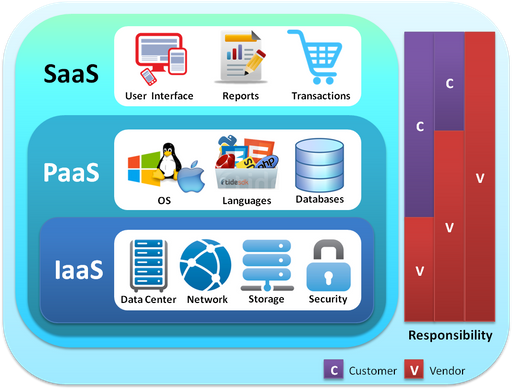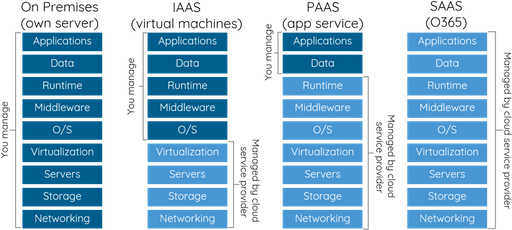What is Cloud Computing actually? ☁️
Let’s dive in to explain what’s happening under the hood of cloud computing. We cover the key concepts and services available today.
Hi Folks!
Have you ever wondered – What Is Cloud Computing? For example, Are you curious about how your Google Drive or Dropbox can do what it does?
Cloud computing is a set of computing resources developed containing computing, networking, and storage capabilities. Think of it as a platform for managing, storing, and processing data that is always online and accessed anywhere where a reliable internet connection exists.
Some of the cloud computing features include the following:
- On-Demand Services – Available when you need it 24/7.
- Network Access – When using the internet as your medium.
- Shared Resources – All resources are gathered together and used by multiple customers.
- Scalability – The ability of a computer system to adapt to increasing demands.
The Three primary delivery models in which Cloud computing can provide different services based on their unique configuration characteristics. You can see in the illustration below how a typical Cloud service provider organizes their SaaS, PaaS, IaaS services. The figure on the right shows what end customers pay for and what Cloud service providers will manage as the hosting vendor.

You can see how the services build on top of each other in the diagram below. It provides an excellent summary of what goes on underneath the hood of it all!

SaaS - Software as a Service
This service provides on-demand pay per use of the application software for users and is independent of a platform. You do not have to install software on your computer, unlike a license paid program. The Cloud runs a single occurrence of the software, making it available for multiple end-users allowing the service to be cheap. All the computing resources responsible for delivering SaaS are typically managed entirely by the vendor and are accessible through a web browser or lightweight client application(s). End customers ranging from individuals to large companies use SaaS regularly.
The most popular SaaS providers offer the following products and services: Google Ecosystem (i.e., Gmail, Google Docs, Google Drive, etc.) Microsoft Office 365, and Salesforce.
PaaS - Platform as a Service
This service is mostly a development environment made up of a programming language execution environment, an operating system, web server, and database. It provides an environment where users can build, compile, and run their programs without worrying about the underlying infrastructure.
PaaS providers offer the following products and services: Amazon Web services, Elastic Beanstalk, Google App Engine, Windows Azure, Heroku, etc.
IaaS - Infrastructure as a Service
This service provides the architecture and infrastructure of the Cloud. It provides all computing resources but in a virtual environment so multiple users can have access. These resources include data storage, virtualization, servers, and networking. Most cloud service providers are responsible for managing them. If you use this service, you can handle other resources, including applications, data, run-time, and middleware. The primary teams which support the infrastructure can consist of System Administrators (SysAdmins) or a DevOps/Site Reliability Engineering (SRE) team within the respective company.
Here are a few examples of IaaS products and services: Amazon EC2, Go Grid, and Rackspace.com.
Shortlist of major cloud service providers and popular products:
iCloud – The cloud service from Apple is for Apple products. You can backup and store everything from multimedia to documents online. The content is then smoothly synced onto your other devices that share the Cloud’s access.
Amazon’s AWS – When you talk about companies using cloud computing, Amazon Web Services leads the pack. It offers IaaS and PaaS to all its customers.
Google Cloud – This cloud platform is universal for Google’s enormous ecosystem and other products such as Google Docs. It provides storage of data and collaboration, and other services included in their cloud computing suite.
Microsoft Azure – Offered by Microsoft, provides SaaS, PaaS, and IaaS for its software and developer tools. If you have used Office 365, then you have used its SaaS.
IBM Smart Cloud – Offers private, public, and hybrid distribution platforms providing a full range of SaaS, PaaS, and IaaS cloud computing services. The pay-as-you-go platform generates profits for IBM.
New applications are coming to life at a rapid pace worldwide, and the Cloud is undoubtedly a major driving force behind it. You can expect cloud computing to be on the rise well into the next decade. Cloud computing is only scratching the surface on what is possible for what we know about applications and services we use in our daily lives. Who knows what will come next?
- Chaance